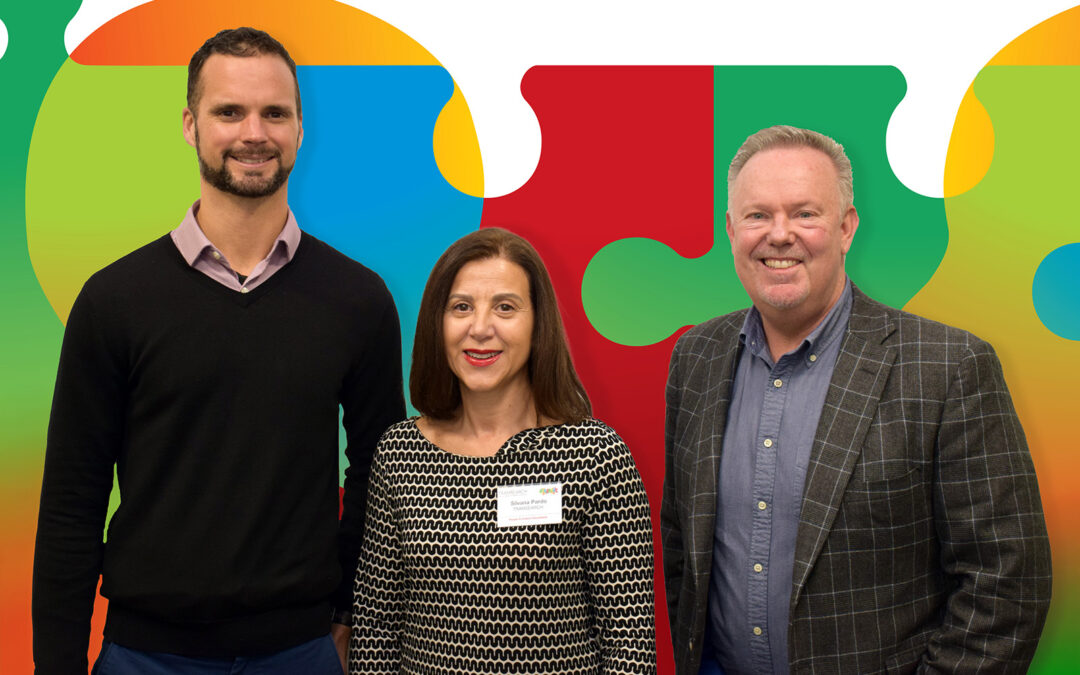Highlights from Our People & Culture Roundtable
It was early 2023 when I first started noticing the headlines about ChatGPT and AI. They were dramatic, and to be honest, a little unnerving. “ChatGPT: An enabler of business transformation or the end of creativity?” I remember thinking, here we go again – another tech trend promising to change everything.
Like many, I stayed on the sidelines at first. I read a few articles, watched a webinar or two, and tried to get my head around what this all meant. Fast forward 18 months, and AI is everywhere. It’s helping us find the name of that movie we half-remember, suggest dinner based on whatever’s left in the fridge, write LinkedIn posts and blogs (ironically), and quietly insert itself into our work lives in ways we couldn’t have predicted.
Along with all the noise, there’s also some fear. Will AI make our jobs redundant? Will it strip away the human qualities we bring to work… creativity, emotional intelligence, innovation?
These were the kinds of questions that came up at our recent Executive People & Culture Roundtable, where a group of thoughtful HR leaders and I came together with Andrew Hill, former Deloitte Partner and global leader in HR Transformation, and Filipe Jara, a specialist in AI-enabled workforce transformation, to talk, listen and learn about what AI really means for People & Culture professionals.
We shared stories. One HR leader talked about using AI to screen thousands of CVs in seconds, helping them identify candidates they might otherwise have missed. Another explained how AI assisted job descriptions saved time and helped ensure their language was inclusive and consistent with the organisation’s values. There were examples of AI supporting onboarding programs, enhancing learning and development tools, even helping workforce planning by predicting future needs.
What struck me most was the tone of the conversation. There was no panic. No hype. Just grounded, practical reflection on what’s possible when AI is used well. No one in the room saw AI as a magic solution. If anything, the group kept coming back to the same point: AI is only ever as useful as the people behind it – those who shape it, guide it and use it thoughtfully.
The discussion brought to life some clear examples of how AI is already improving HR practice:
- People Analytics: A technology company leveraged AI to predict employee turnover, which helped reduce attrition by enabling leaders to take action sooner. Real-time insights replaced outdated, historical reports, allowing trends to be spotted early so proactive steps could be taken instead of reacting after problems emerged.
- Employee Experience: Annual engagement surveys are giving way to continuous, real-time feedback that provides leaders with a clearer picture of how employees feel day-to-day. By using live data to create personalised engagement strategies, leaders can address issues earlier and in ways that feel more relevant to each individual.
- Talent Development: Learning opportunities are now tailored to match individual interests and preferred styles, making training more engaging and effective. By aligning development programs with both business priorities and employees’ own aspirations, organisations are creating experiences that feel more personal, relevant and motivating.
- Recruitment: A bank adopted AI to automate its screening process, attracting eight times more candidates and cutting hiring time by 20%. This approach made recruitment faster and more inclusive, while reducing reliance on subjective gut feel and creating a fairer process.
- HR Support: In a hospital, an AI-powered HR assistant handled over 1,700 conversations, with only seven needing to be escalated to a human. This dramatically improved response times, ensured consistent support for employees and allowed HR teams to focus on more strategic initiatives.
None of these examples felt theoretical. They were practical, purposeful and anchored in real challenges.
However, there are some obvious questions about AI in a recruitment context. Position descriptions and job ads risk becoming generic, an unintended consequence of using the technology to tailor both. If candidates are using the same AI to write cover letters and respond to selection criteria, does that make those responses redundant? One participant noted that AI blind screening can reduce bias by ignoring demographic indicators. But it can also learn biases, so humans still need to be involved in oversight.
Within People & Culture, AI could be used by employees and employers to reinterpret complex issues involving employment contracts, EBAs and Awards, potentially creating legal headaches for HR and Fair Work alike. We’ll need to grapple with these tougher questions as AI becomes more deeply embedded in how we attract, assess and engage people.
What stayed with me was that AI should give us back time for what matters. HR often get’s bogged down in admin, when we’d prefer to have face to face interactions, particularly when it comes to difficult conversations. Work that really needs a human touch, such as shaping culture, building relationships and leading change, cannot be outsourced to technology.
Treat AI agents as employees: define their roles, set KPIs, provide training and manage performance to ensure successful integration. By taking this approach, we position ourselves to use AI intentionally, making it a partner that complements our work, rather than a force we fear.
HR certainly has a role to play in helping organisations see AI as a support, not a threat. The basics still matter – you can’t layer AI on top of messy data, disconnected systems or poor governance and expect good results.
I left the roundtable feeling more energised and far less anxious about AI. It brings an abundance of opportunity, but there’s also a great responsibility to use it well.
So next time you see a headline about AI taking over the world, or you’re invited to yet another webinar, maybe take a moment. Ask yourself: What could AI help us do better? And how do we bring it in as a partner, not a threat?

Silvana Pardo is a Director of TRANSEARCH International Australia, one of Australia’s most progressive executive search firms and one of the leading executive search organisations in the world. With over 25 years of experience and an extensive business network of Human Resource professionals, Silvana enjoys an outstanding reputation as one of Australia’s leading Search Practitioners. Read more…


